Using Design Thinking To Get Inside The Patient Experience
Lawrence General Hospital is situated just outside of Boston and serves about 300,000 patients each year. To make sure that their focus is always where it is meant to be, Lawrence General Hospital (LGH) has an active patient experience team with representation from across the hospital. The team runs a number of initiatives to better understand and serve their patients’ needs, and are always striving to incorporate new tools and techniques into their practice. To that end, they invited us, Sutherland’s design experts in the Labs, to run a Design Thinking workshop.
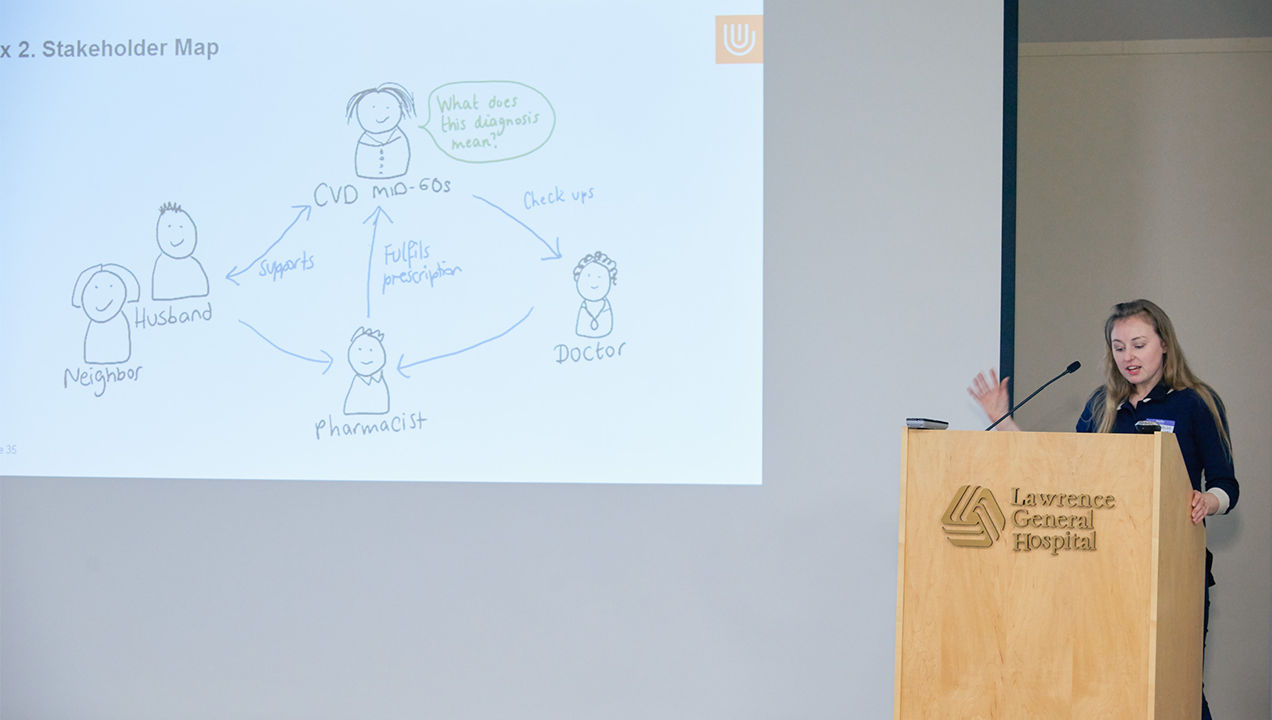
While we have worked extensively with the healthcare sector in the past, there were some unique considerations required to run a workshop for a hospital.
Choosing a location that won’t kill anyone
The 25 people who were involved in our workshop at Lawrence General Hospital came from across all the different parts of the business, and while some of them could afford to be absent if catastrophe struck in the nearby area, many of the staff members who were in attendance were on-call. The workshop had to be conducted on-site in the hospital in case an emergency hit. In other industries an unavailable employee can cost the business money or slow down the speed of service, in healthcare it can cost lives.
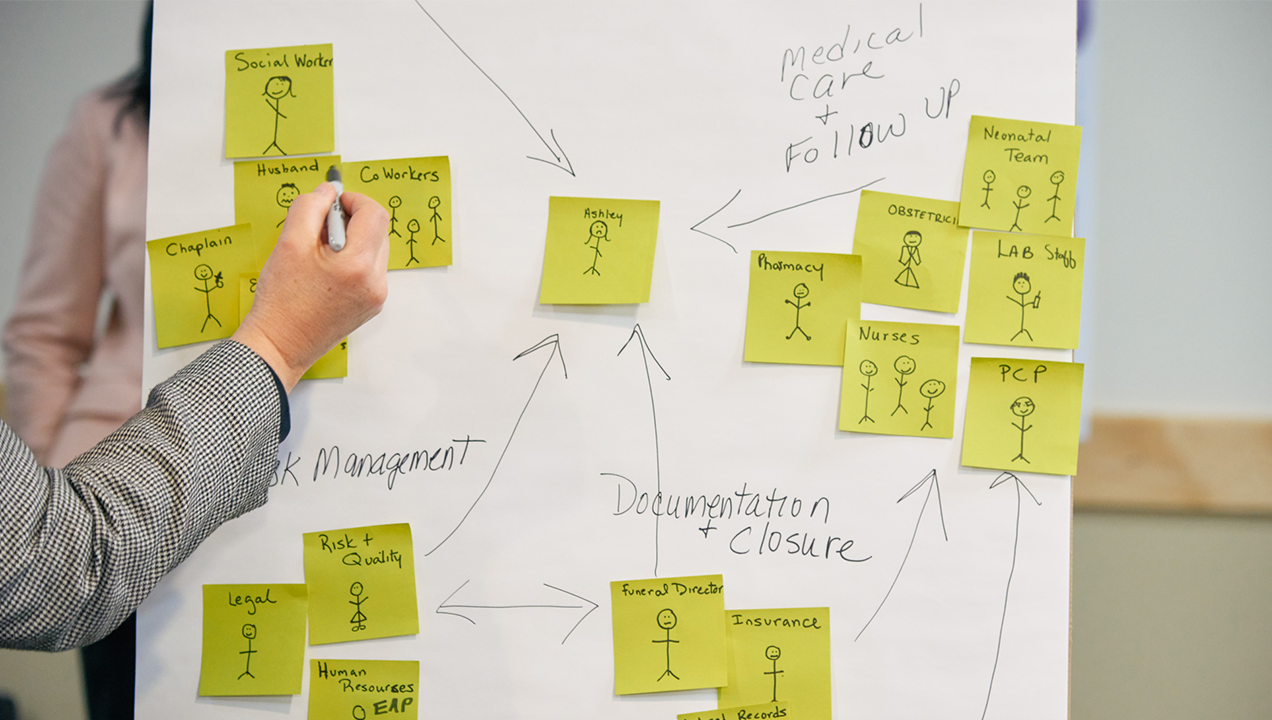
Workflows as complex as the human body
In an ideal world, the workflow for a hospital would be as simple as one for a retail business. A patient would arrive, be diagnosed, receive their treatment and be sent home. In reality health problems are much more complex and the resources that are available to treat people are limited.
Ongoing treatment for medical conditions can last for months or years with dozens, if not hundreds of appointments needing to be scheduled, rescheduled and shuffled around to accommodate not only the availability of staff and resources, but also the availability of the patients. Even patients who are receiving regular care can be forced out of their usual workflow and into the emergency room if their symptoms suddenly gain intensity.
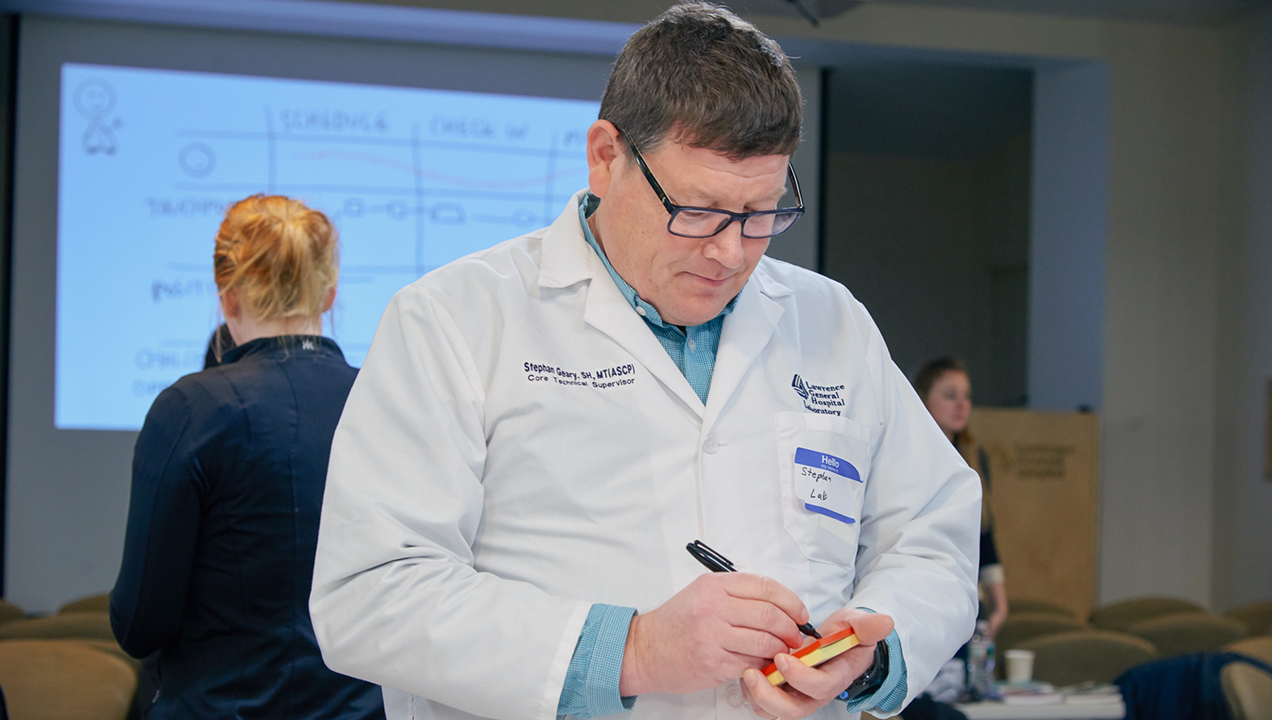
Cultivating empathy under pressure
The “pain points” in the patient’s journey through the hospital are massively amplified by the fear and confusion that they are experiencing. While this is easy to understand in the abstract, the demands on medical staff and lack of visibility across the patient’s journey makes it difficult for them to cater to all of the patient’s emotional needs.
As Vanessa Sevilhano, one of our design team for the project, explains: “By giving workshop attendants a patient persona and having them work through the process that the patient would experience, they discovered the moments when stress levels would be the highest. From there, we worked out ways to improve the patient experience – for example, providing patients with more information about their situation.”
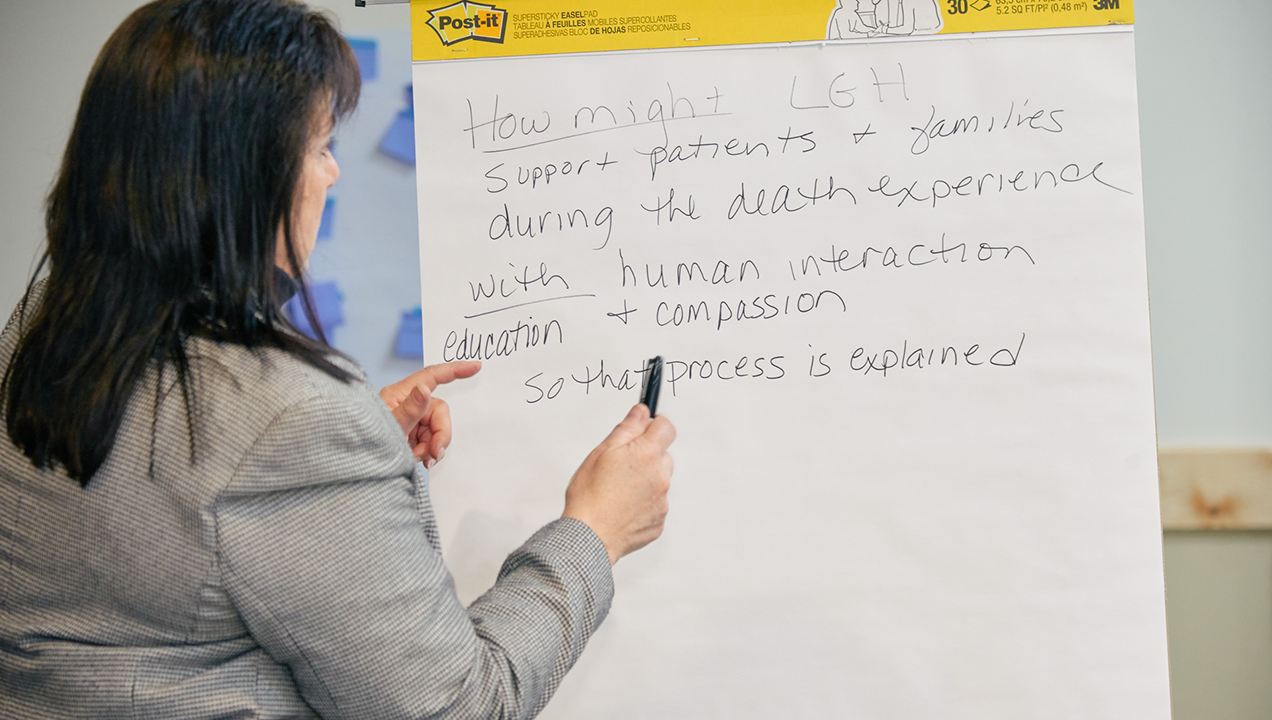
As we built the persona for a person who comes into the hospital on an ambulance, into the ER, and eventually moves to an in-patient stay, we felt more and more how intense it must be for the patient. The number of touch-points gets exponentially bigger as they go through their experience, their journey…
Christina Wolf, Clinical Manager, Population Health at Lawrence General Hospital
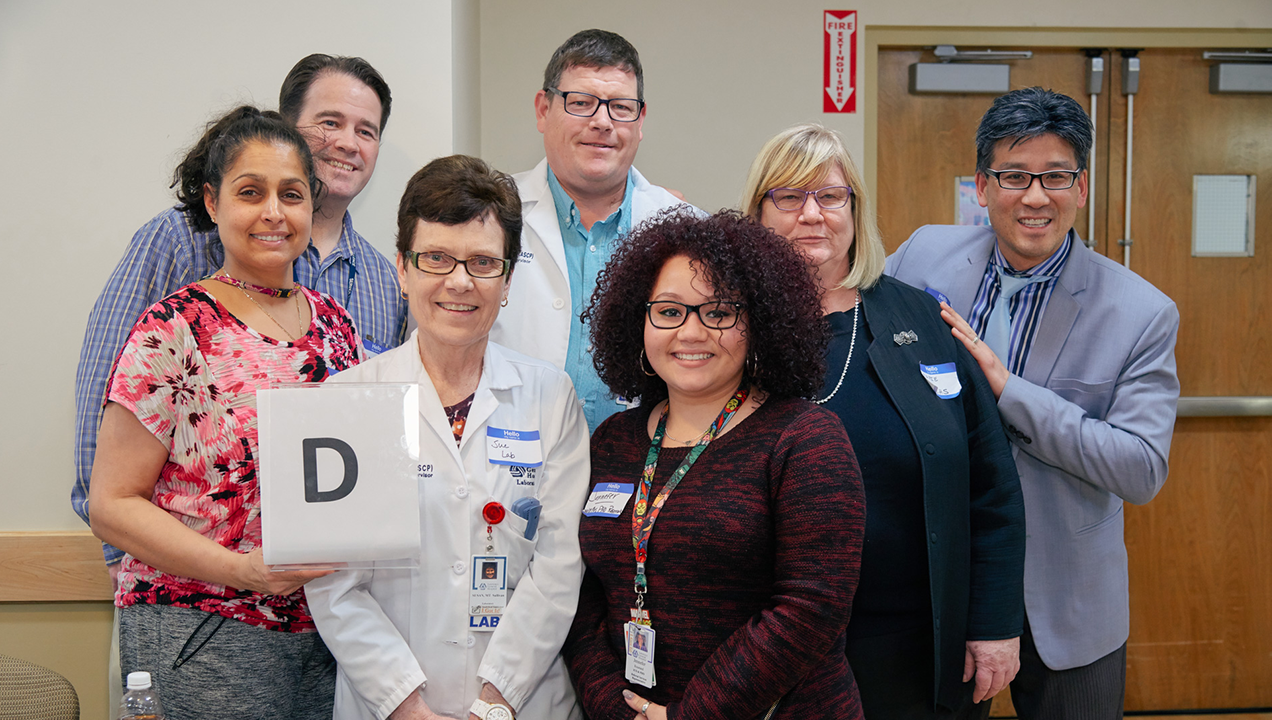
Concluding thoughts
Lawrence General Hospital was already well on its way to developing an understanding of patient experience, and they were already working to break down the barriers between the different departments of their hospital to achieve their goals. The workshop provided a quick, cost-effective way to gain a grounding in design thinking techniques to gather and act on insights from patients and staff.
Christina Wolf, Clinical Manager, Population Health at Lawrence General Hospital commented:
“What stands out to me is this. We know who the people are who are coming through the doors. But as we built the persona for a person who comes into the hospital on an ambulance, into the ER, and eventually moves to an in-patient stay, we felt more and more how intense it must be for the patient. The number of touch-points gets exponentially bigger as they go through their experience, their journey… It’s our day job, and we are used to it. But this person is sick and vulnerable, and here we are descending with advice, interventions, meds, education…. It was really good to have the front line providers and staff from different departments involved in this activity so we can support the patient and each other better during busy times on the floor.”
Additional resources:
We were fortunate to have Barbra McGann from HfS Research shadow our engagement with Lawrence General Hospital. To read her impressions, and full report, please visit the HfS Research website.
Special thanks goes to my team mate and co-author Vanessa Sevilhano who worked alongside me on this project.
